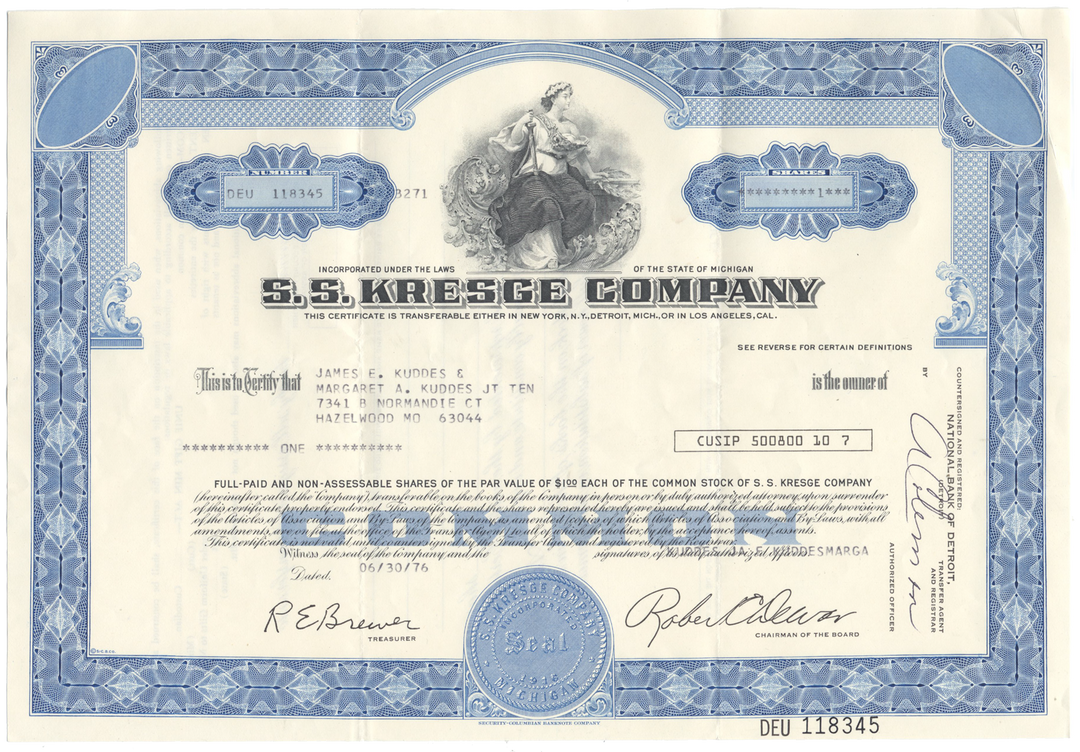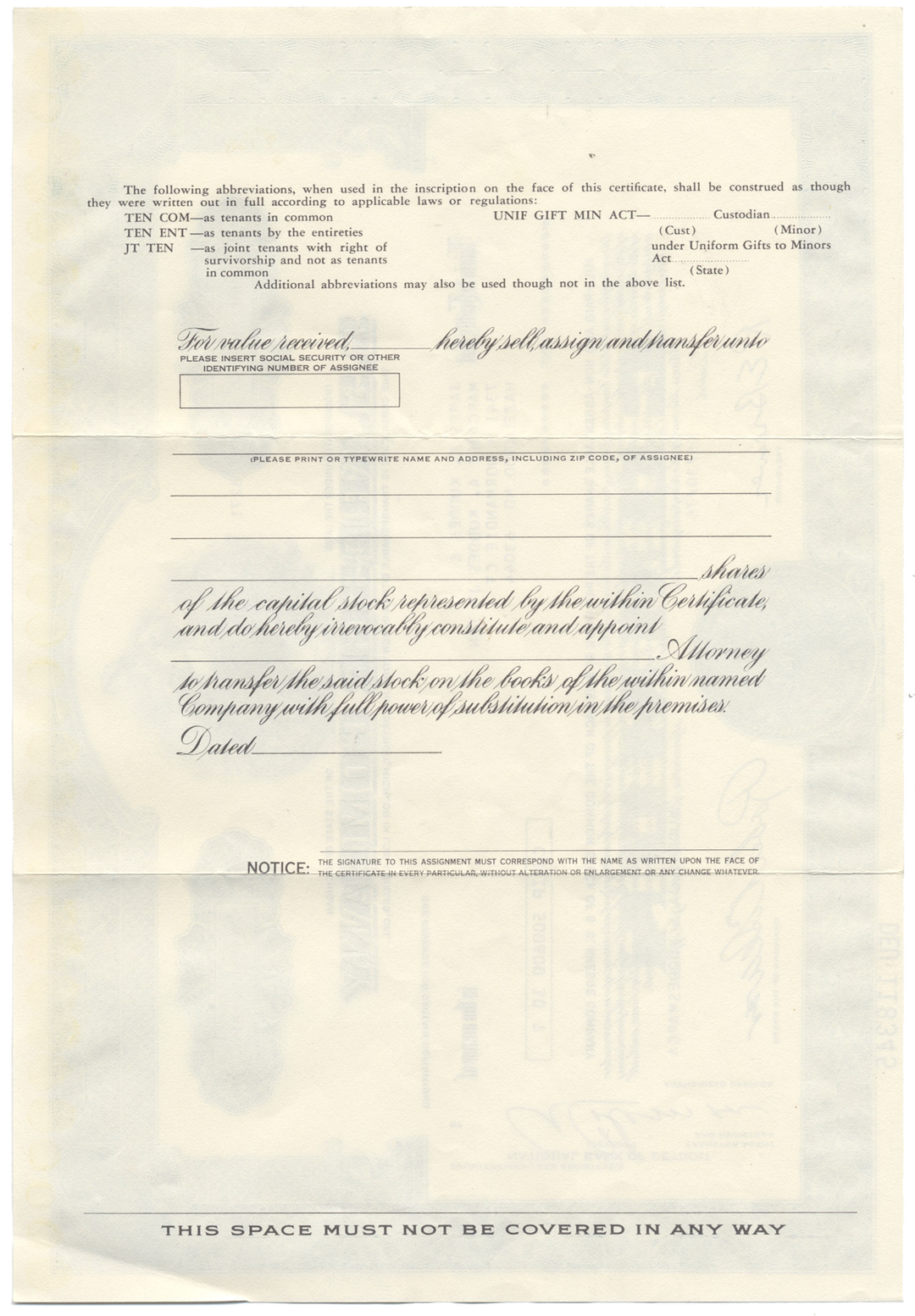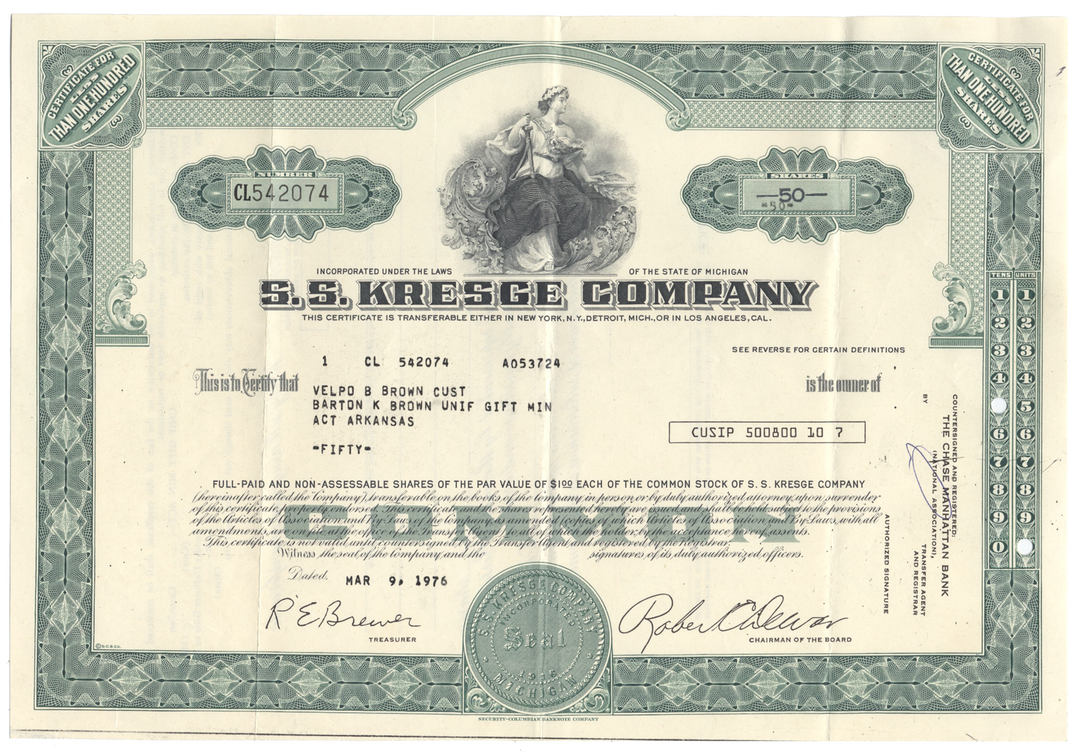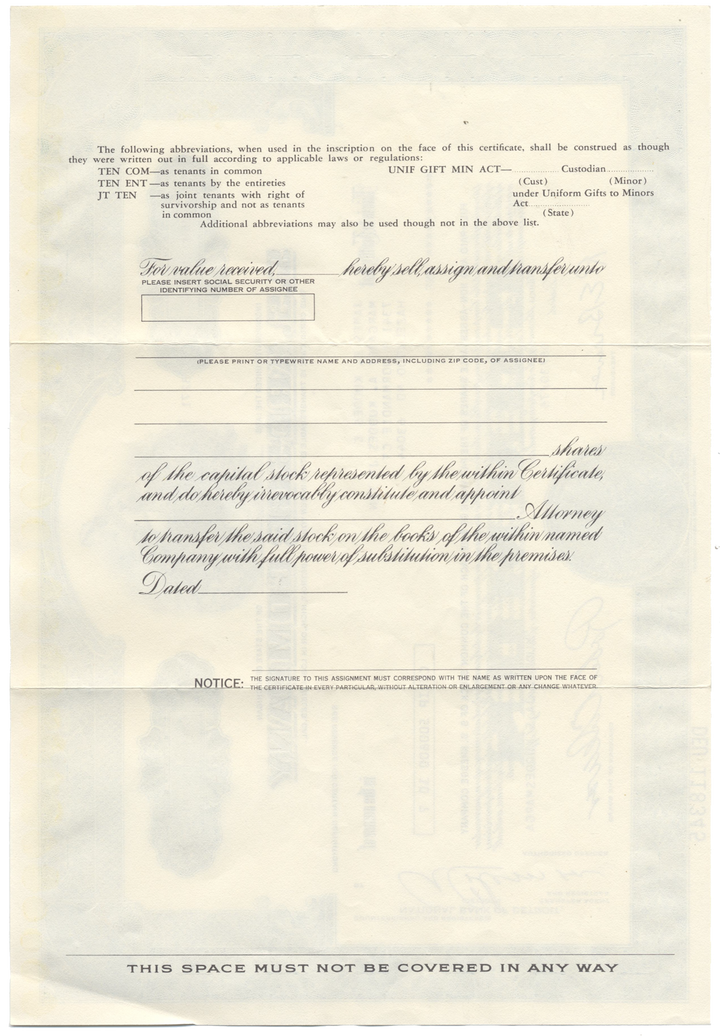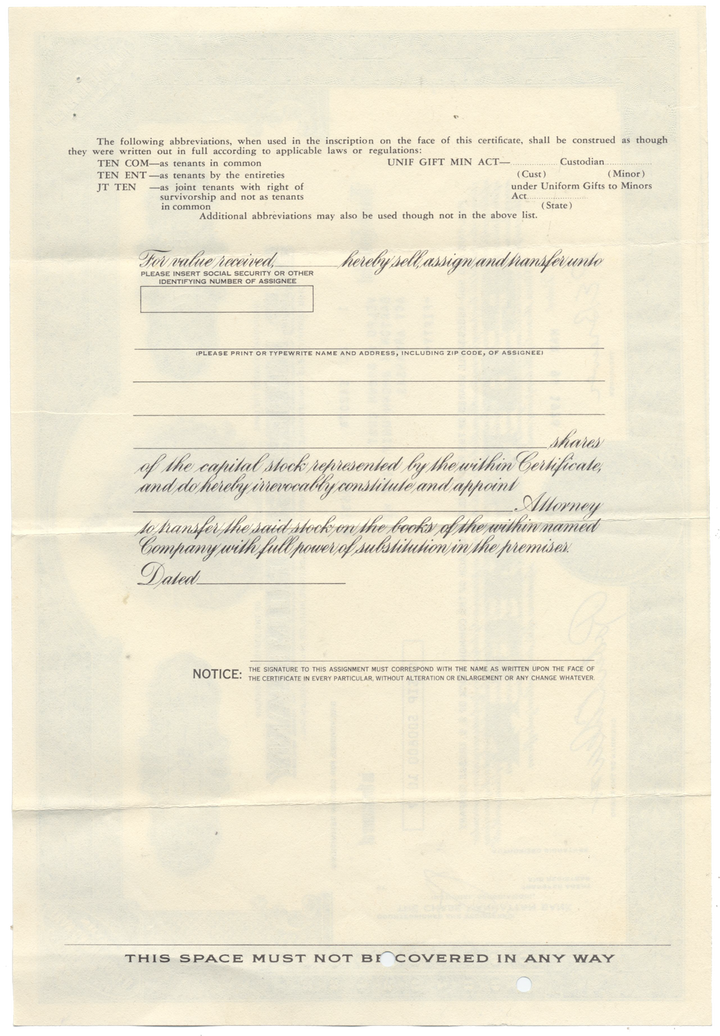S. S. Kresge Company (Kmart, Sears)
- Guaranteed authentic document
- Orders over $75 ship FREE to U. S. addresses
Product Details
CompanyS. S. Kresge Company
Certificate Type
Common Stock
Date Issued
June 30, 1976 (blue)
March 9, 1976 (green)
Canceled
No
Printer
Security-Columbian Bank Note Company
Signatures
Machine printed
Approximate Size
12" (w) x 8" (h)
Images
Show the exact certificate you will receive
Guaranteed Authentic
Yes
Additional Details
NA
Historical Context
S. S. Kresge, the founder of the company that would become Kmart, met variety-store pioneer Frank Winfield Woolworth while working as a traveling salesman and selling to all 19 of Woolworth's stores at the time. In 1897 Kresge invested $6,700 saved from his job into a five-and-dime store in Memphis, Tennessee. He jointly owned the first store with his former tinware customer, John McCrory. Kresge and McCrory added a second store in downtown Detroit the following year. These were the first S.S. Kresge stores. After two years of partnership, he traded McCrory his share in the Memphis store, plus $3,000, for full ownership of the Detroit store, and formed the Kresge & Wilson Company with his brother-in-law, Charles J. Wilson.
In 1912, Kresge incorporated the S.S. Kresge Company in Delaware with eighty-five stores. In 1916, Kresge incorporated a new S.S. Kresge Company in Michigan and took over the operations of the original company; the new company in Michigan is the modern day Kmart company. The company was first listed on the New York Stock Exchange on May 23, 1918.
During World War I, Kresge experimented with raising the limit on prices in his stores to $1. By 1924, Kresge was worth approximately $375 million and owned real estate of the approximate value of $100 million. Growth early in the 20th century remained brisk, with 257 stores in 1924, rising to 597 stores by 1929. Kresge retired as president in 1925. The Great Depression reduced profitability and resulted in store closings, with the number rising to 682 in 1940. After the war, shopping patterns changed and many customers moved out of the cities into the suburbs. The Kresge Company followed them and closed and merged many urban stores; by 1954, the total number of stores in the US had declined to 616.
1960s–1970s
Under the leadership of executive Harry Cunningham, S.S. Kresge Company opened the first Kmart-named store on March 1, 1962, in Garden City, Michigan, just four months before the first Walmart opened. Eighteen Kmart stores opened that year. Kmart Foods, a now-defunct chain of Kmart supermarkets, opened in that decade. Though the store chain continued to open Kmart branded stores, the store chain was still officially called S.S. Kresge Company.
Company founder Kresge died on October 18, 1966.
Around the time of the opening of the first Kmart, some poorly performing S.S. Kresge stores were converted to a new "Jupiter Discount Stores" brand, which was conceived as a bare-bones, deep discount outfit. During the 1970s, Kmart put a number of competing retailers out of business. Kresge, Jupiter and Kmart stores mainly competed with other store chains like Zayre, Ames, Bradlees, Caldor, Hills, and those that were operated by MMG-McCrory Stores (McCrory, McLellan, H.L. Green, J.J. Newberry, S.H. Kress, TG&Y, Silver's and eventually G.C. Murphy Co.).
In 1977, S.S. Kresge Company changed its name to K Mart Corporation.
1980s
In 1980, Vice Chairman Bernard M. Fauber was elected as the Chairman and as the CEO of Kmart.
In 1981, the 2,000th Kmart store opened. By the end of 1981, there were 2,055 Kmart stores across the United States, Canada, and Puerto Rico.
In 1987, the Kmart Corporation sold its remaining 76 Kresge and Jupiter stores in the United States to McCrory Stores, and the brands were almost entirely discontinued, although Canadian Kresge and Jupiter stores continued to operate until 1994.
Kmart experimented with co-branding in 1985, when the in-store cafeteria at the store in Canton, Michigan, was converted to a Wendy's.
Until November 1990, when it was passed by Walmart, Kmart was the second-largest retailer in the United States, after Sears. During the 1980s, the company's fortunes began to change; many of Kmart's stores were considered to be outdated and in decaying condition. In the late 1980s and into the 1990s, the corporate office shifted much of its focus from the Kmart stores to other companies it had acquired or created, such as Sports Authority, Builders Square, and Waldenbooks.
Related Collections
Additional Information
Certificates carry no value on any of today's financial indexes and no transfer of ownership is implied. All items offered are collectible in nature only. So, you can frame them, but you can't cash them in!
All of our pieces are original - we do not sell reproductions. If you ever find out that one of our pieces is not authentic, you may return it for a full refund of the purchase price and any associated shipping charges.






